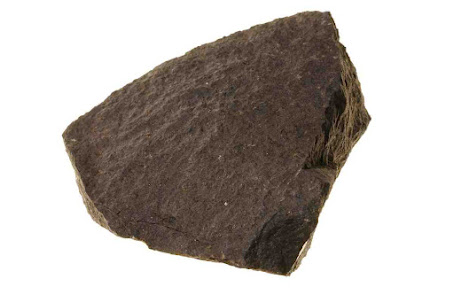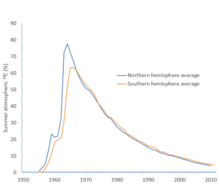Unveiling the Mysteries of Carbon Dating: Decoding the Past
Hey there! Have you ever found yourself gazing at ancient artifacts or fossils and wondering, "How old are these things, really?" It's mind-boggling to think about the age of such items, isn't it? Well, buckle up, because today we're diving into the fascinating world of carbon dating, a scientific technique that helps us unlock the mysteries of the past.
You might be wondering, what exactly is carbon dating? Simply put, it's a powerful method scientists use to estimate the age of organic materials like bones, wood, or cloth. But here's the kicker: it doesn't involve peering into a crystal ball or relying on wild guesses. Instead, carbon dating relies on the natural process of radioactive decay, specifically the decay of an isotope called carbon-14.
Carbon-14 is a special form of carbon that exists in our atmosphere. Now, don't worry, it's not some dangerous substance floating around us. In fact, it's quite normal. You see, carbon-14 is produced when cosmic rays from outer space interact with nitrogen in our atmosphere. And this is where things get really interesting.
Unlike the more common forms of carbon, carbon-12 and carbon-13, carbon-14 is a bit of a rebel. It's radioactive, meaning it undergoes a process called decay over time. This decay is measured using something called a half-life, which is the time it takes for half of the carbon-14 in a sample to break down. For carbon-14, that half-life is around 5,730 years.
So, how does this help us determine the age of ancient artifacts? Well, stick with me, and we'll explore the carbon dating process, the techniques involved, and the incredible insights it has provided to fields like archaeology, anthropology, and paleontology. Plus, we'll address some common misconceptions and look ahead to the future of carbon dating.
Ready to travel through time and unravel the secrets of the past? Let's dive right in and uncover the wonders of carbon dating.
Section 1: Understanding Carbon-14
Alright, folks, let's start by getting to know our star of the show - carbon-14! Now, you might be wondering, what on earth is this carbon-14 thingy and why is it so important? Well, let me break it down for you.
Carbon-14 is a type of carbon, one of the building blocks of life, just like the carbon we breathe out as carbon dioxide. But here's the thing that sets carbon-14 apart from the regular carbon we usually talk about - it's radioactive! Yes, you heard that right, radioactive! But don't go running for cover just yet; it's not as scary as it sounds.
The story of carbon-14 begins high up in the atmosphere, where cosmic rays from outer space are bombarding us all the time. These cosmic rays are like tiny particles zipping through space, and when they reach the Earth, they collide with nitrogen atoms in our atmosphere.
Now, here's where the magic happens. When a cosmic ray smacks into a nitrogen atom, it transforms that nitrogen atom into a carbon-14 atom. It's like giving nitrogen a little makeover, turning it into a hip and happening carbon-14 isotope!
But here's the kicker - carbon-14 is a bit unstable. It's like that friend who's always up for a party but can't seem to stay still. Over time, carbon-14 starts to break down, or decay, into something else. And guess what it turns into? Nitrogen-14! So, it's like a cosmic cycle of transformation - nitrogen to carbon-14 and then back to nitrogen again.
Now, this whole process might seem insignificant, but it's crucial for carbon dating. You see, while a living organism is kicking and breathing, it's constantly taking in carbon, including carbon-14, from the environment. But when the organism dies, it stops gobbling up new carbon. And what happens then? The carbon-14 it already has starts its radioactive journey towards nitrogen-14.
By measuring the remaining amount of carbon-14 in an ancient sample, scientists can calculate how much decay has happened since the organism died. And since we know the half-life of carbon-14 (around 5,730 years), we can work our way backward to figure out how old that sample really is!
Pretty cool, right? Carbon-14 is like a time capsule hidden in ancient materials, waiting to spill its secrets about the past. But hang on, we're just getting started! Next up, let's delve into the nitty-gritty of how we use carbon dating to unravel the age of those intriguing artifacts and fossils.
Section 2: The Carbon Dating Process
Alright, my curious friends, now it's time to uncover the inner workings of the carbon dating process. How do scientists take those ancient relics and determine their age with such precision? Let's find out!
1. Collection of Samples:
First things first, we need to get our hands on organic materials from the past. Think of items like wooden artifacts, bones, or ancient textiles. These materials contain carbon, and that's what we're interested in. The samples need to come from once-living organisms that interacted with the atmosphere and took in carbon-14.
2. Sample Preparation:
Once we have our samples, it's time to prepare them for analysis. But hold on, we can't rush into the lab just yet. We need to ensure that our samples are clean and free from any potential contaminants. Why? Well, contaminants could throw off our carbon dating results, leading to inaccurate age estimates. So, the samples undergo a careful cleaning process to remove any unwanted substances.
3. Measurement Techniques:
Alright, here comes the fun part! We're going to measure the carbon-14 content in our samples. Now, there are a few techniques that scientists use, but one of the most common methods is called accelerator mass spectrometry (AMS). It's a mouthful, I know, but bear with me.
In AMS, our samples are turned into graphite, a form of carbon. Then, a fancy machine called an accelerator mass spectrometer is used to count the number of carbon-14 atoms present. This machine can detect even incredibly tiny amounts of carbon-14 and provide precise measurements.
By comparing the carbon-14 levels in our samples to the levels in living organisms today, scientists can calculate the amount of decay that has occurred since the organism died. And with the half-life of carbon-14 as our guide, we can determine the age of the sample. It's like playing detective with atoms!
But wait, there's more! To ensure the utmost accuracy, scientists often analyze multiple samples from the same artifact or site. This helps establish a more reliable age range and reduces the likelihood of errors or anomalies affecting the results.
So, there you have it! The carbon dating process takes us from collecting samples to preparing them and finally using advanced measurement techniques to unravel the age of the past. It's a fascinating blend of science, technology, and meticulous attention to detail. But remember, carbon dating is just one piece of the puzzle. There are other dating methods out there that complement each other, helping us piece together a more complete picture of history.
In our next section, we'll explore the wonderful applications of carbon dating, from unearthing ancient civilizations to shedding light on human evolution. Stick around!
Section 3: Applications of Carbon Dating
Welcome back, my fellow time travelers! Now that we've uncovered the secrets of the carbon dating process, it's time to explore the incredible applications of this remarkable technique. From unraveling ancient civilizations to shedding light on human evolution, carbon dating has left an indelible mark on various scientific fields. Let's dive in!
1. Archaeology:
Carbon dating has been a game-changer for archaeologists worldwide. By determining the age of organic materials found at archaeological sites, such as wooden tools, pottery, or even human remains, scientists can piece together a more accurate timeline of past civilizations. It helps answer questions like: How old are those fascinating Egyptian mummies? When did the great pyramids of Giza truly stand tall? Carbon dating provides vital clues to understanding our human history.
2. Anthropology:
When it comes to understanding human evolution and migration patterns, carbon dating is an invaluable tool. By dating ancient human remains and artifacts, researchers can gain insights into when our ancestors lived, how they interacted, and how they adapted to different environments. It helps us piece together the puzzle of our collective past, providing glimpses into the lives of early humans and our shared journey as a species.
3. Paleontology:
Ah, the land of dinosaurs and prehistoric wonders! Carbon dating has revolutionized the field of paleontology, enabling scientists to determine the age of fossils and ancient remains. By dating bones, teeth, or other organic material, researchers can reconstruct the timeline of extinct species, track their evolution, and understand the environmental conditions they thrived in. From the mighty T-Rex to the gentle giants of the Ice Age, carbon dating has unveiled the hidden chronicles of Earth's ancient inhabitants.
4. Environmental Studies:
Believe it or not, carbon dating isn't limited to archaeology and paleontology. It also plays a role in environmental studies. By analyzing organic matter in sediment cores or tree rings, scientists can study past climate changes, track shifts in ecosystems, and assess the impact of human activities on the environment over time. Carbon dating helps us understand the long-term effects of human civilization and provides important insights into how our planet has evolved.
5. Art Authentication:
Yes, you heard it right! Carbon dating even has its place in the world of art authentication. Forgers, beware! By analyzing the age of materials used in paintings, sculptures, or other artistic creations, experts can verify their authenticity. Carbon dating has been instrumental in identifying fraudulent artworks and preserving the integrity of cultural heritage.
These applications are just the tip of the iceberg. Carbon dating continues to amaze and contribute to various fields, unlocking the secrets of our past and shaping our understanding of the world around us.
But, my friends, as with any scientific method, carbon dating has its limitations and potential sources of error. In the next section, we'll address some of the controversies, challenges, and ongoing debates surrounding this fascinating technique.
Section 4: Controversies and Debates
Welcome back, fellow explorers! As with any scientific method, carbon dating is not without its fair share of controversies, challenges, and ongoing debates. Let's dive into some of the key points that spark discussion among researchers and skeptics alike.
1. Validity of Carbon Dating:
One of the common criticisms leveled against carbon dating is its reliance on certain assumptions. Critics argue that the ratio of carbon-14 to carbon-12 in the atmosphere may have fluctuated over time, potentially leading to inaccurate age estimates. Additionally, factors like contamination or sample degradation can introduce errors into the dating process. However, it's important to note that scientists have developed rigorous protocols to address these concerns and minimize uncertainties.
2. Calibration Curves and Uncertainties:
Carbon dating relies on calibration curves to convert radiocarbon years into calendar years. These curves are constructed using known historical events and tree ring data. However, the calibration process introduces a level of uncertainty, especially when dealing with samples older than a few thousand years. The accuracy of calibration can vary depending on the region and the availability of suitable reference materials.
3. Other Dating Methods:
While carbon dating is a powerful tool, it's not the only method available for dating ancient artifacts or fossils. Dendrochronology, which examines tree rings, and thermoluminescence dating, which measures radiation exposure in certain materials, are among the alternative techniques used in conjunction with carbon dating. Each method has its strengths and limitations, and combining multiple approaches can provide a more comprehensive understanding of the past.
4. Beyond the Carbon-14 Limit:
Carbon dating has its inherent limitations, primarily related to the half-life of carbon-14. After around 50,000 years, the amount of carbon-14 remaining in a sample becomes too small to accurately measure. To date materials older than this threshold, scientists must resort to other dating methods, such as uranium-lead dating for rocks or potassium-argon dating for volcanic ash.
5. Ongoing Research and Advancements:
Scientists are continuously refining carbon dating techniques and developing new approaches to overcome limitations. Emerging technologies and analytical methods aim to extend the dating range, improve calibration accuracy, and enhance the precision of age estimates. It's an exciting time for carbon dating as researchers push the boundaries of what we can uncover about our past.
Remember, controversies and debates are part of the scientific process. They challenge our understanding, drive innovation, and foster new discoveries. While carbon dating may have its complexities, it remains a cornerstone of archaeological, anthropological, and paleontological research, providing valuable insights into the age of ancient materials and the chronicles of our history.
In our final section, we'll take a peek into the future of carbon dating and explore the exciting possibilities that lie ahead. Ready to join me on this journey? Let's go!
Section 5: The Future of Carbon Dating
Greetings, fellow time travelers! As we near the end of our carbon dating expedition, it's time to cast our eyes towards the horizon and explore the exciting future of this remarkable technique. What developments and possibilities await us? Let's embark on this final leg of our journey together!
1. Improved Precision and Accuracy:
Scientists are continually striving to enhance the precision and accuracy of carbon dating. Refinements in measurement techniques, data analysis, and calibration methods are being explored to reduce uncertainties and improve the reliability of age estimates. Advancements in instrumentation and sample preparation techniques may contribute to more precise dating results.
2. Extended Dating Range:
As mentioned earlier, carbon dating has a limit of around 50,000 years due to the decreasing amount of carbon-14. However, researchers are developing innovative ways to extend the dating range. One promising approach is the application of accelerator mass spectrometry (AMS) with other isotopes, such as uranium or thorium, allowing for dating of materials beyond the carbon-14 limit.
3. Combined Dating Methods:
The future of dating techniques lies in the integration of multiple methods. By combining carbon dating with other dating techniques like luminescence dating or genetic dating, scientists can cross-validate results and obtain a more comprehensive understanding of the age of artifacts or fossils. This multidisciplinary approach will lead to a richer and more accurate interpretation of our past.
4. Environmental Applications:
With increasing concerns about climate change and environmental impacts, carbon dating can play a significant role in understanding past environmental changes. By refining techniques for dating sediment cores, ice cores, or coral reefs, researchers can reconstruct past climate patterns with higher resolution. This knowledge is crucial for predicting future climate trends and informing environmental conservation efforts.
5. Technological Advancements:
Advances in technology, such as improved radiocarbon measurement methods and portable instrumentation, may make carbon dating more accessible and efficient. This could open up opportunities for on-site dating at archaeological excavations or expeditions, allowing real-time age determination and immediate insights into historical contexts.
6. Interdisciplinary Collaborations:
The future of carbon dating lies not only in technological advancements but also in interdisciplinary collaborations. When researchers from different fields come together, combining their expertise and knowledge, new possibilities arise. Collaborations between archaeologists, physicists, chemists, and computer scientists, among others, can lead to innovative approaches and breakthroughs in dating methods.
As we embrace the future of carbon dating, it's important to acknowledge that science is an ever-evolving pursuit. New discoveries, methodologies, and debates will continue to shape our understanding of the past. Carbon dating, with its rich history and ongoing advancements, will undoubtedly remain a vital tool in unraveling the mysteries of our ancient world.
Final Thoughts
Well, folks, we've reached the end of our captivating journey into the world of carbon dating. We've explored the ins and outs of this incredible technique, from the radioactive nature of carbon-14 to its applications in archaeology, anthropology, paleontology, and beyond. We've delved into the controversies, challenges, and ongoing debates surrounding carbon dating, and we've glimpsed into the promising future that lies ahead.
Through carbon dating, we've unlocked the stories of ancient civilizations, pieced together the puzzle of human evolution, and discovered the secrets hidden within fossils and artifacts. It's a testament to the power of science and our insatiable curiosity to understand the past.
But remember, carbon dating is just one tool in our arsenal. It's part of a larger scientific tapestry that includes other dating methods, interdisciplinary collaborations, and technological advancements. As we continue to explore and push the boundaries of our knowledge, new discoveries will undoubtedly reshape our understanding of history.
So, let's celebrate the wonders of carbon dating and the countless scientists who have dedicated their lives to unraveling the mysteries of the past. Let's remain curious, open-minded, and appreciative of the complexities and uncertainties that come with scientific exploration.
As we bid farewell, remember that the past has many tales to tell, and it's up to us to listen, learn, and share those stories with the world. Whether you're an archaeologist unearthing ancient relics or a curious soul seeking knowledge, let the spirit of discovery guide you.
Until we meet again on our next adventure, keep exploring, keep questioning, and keep embracing the wonders of our world. The past awaits us, and the future is ours to shape. Bon voyage, my fellow time travelers!
THANK YOU FOR READING!!
FOLLOW FOR MORE AMAZING CONTENT
MUST READ
- DECODING REALM OF CRYPTOGRAPHY
- NAVIGATING SECRETS OF SPACE TIME
- EXPLORING QUANTUM PHYSICS AND ITS WONDERS
- PINK WHATSAPP SCAM EXPOSED
- UNLOCKING META'S NEW FRONTIER
- BLAST OFF INTO THE COSMOS
- HOW TO CRACK NEET IN FIRST ATTEMPT
- THE MAGNIFICENT QUANTUM REVOLUTION
- CYBER FORENSICS-DATA INVESTIGATION
- EVERYTHING YOU NEED TO KNOW ABOUT ESPORTS
- HOW BLOCKCHAIN TECHNOLOGY IS CHANGING THE WAY WE WORK?
- MASTERING JEE- KEY TO CRACK JEE IN 2024
- MOLECULAR MODELING IN SCIENTIFIC RESEARCH
- HOW TO CRACK UPSC IN FIRST ATTEMPT
- WHAT IS ETHICAL AND WHITE HAT HACKING?
- MYSTERIES OF UNIVERSE AND COSMOLOGY
- UNLOCKING SECRETS OF DATA SCIENCE
- HOW SUGAR IMPACTS OUR HEALTH
- THE MAGIC OF DRONES AND THEIR POWER
- IS MATERIAL SCIENCE FUTURE OF TECHNOLOGY?
- CYBERSECURITY-KEY TO SAFEGUARD YOUR DATA
- REVEALING TRUTH BEHIND DEEP-FAKE
- TRANSFORMATION OF SATELLITES AND MISSILES
- A CLOSER LOOK TO GRAPHENE
- THE IMPACT OF SPACE TECHNOLOGY
- UNCOVERING MYSTERIES OF IoT
- EXPLORING DEPTHS OF AUGMENTED REALITY
- FUTURE OF ELECTRIC AUTOMOBILES
- WHAT IS QUANTUM COMPUTING?
- AUTOMATION-THE ROBOTIC PROCESS
- THE INCREDIBLE CHOCOLATE HISTORY
- HOW SUGAR IMPACTS OUR HEALTH AND WELL-BEING?






























